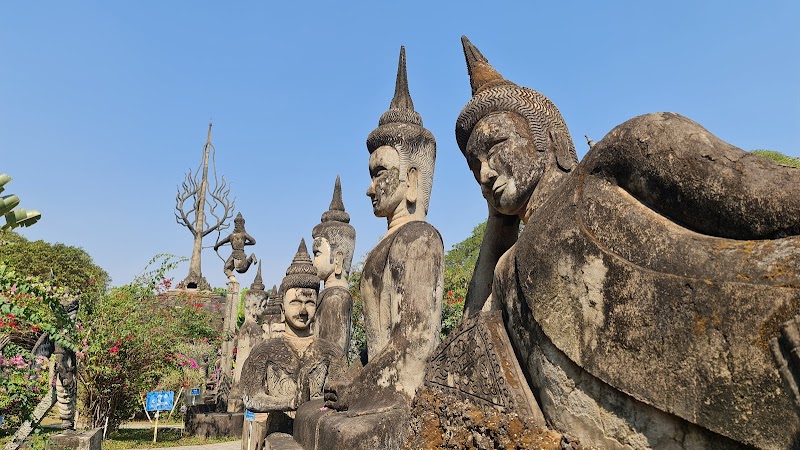
Experience The Plain Of Jars Festival: A Journey Into Laos’ Ancient Heart
The Plain of Jars Festival in Muang Phonsavan invites travelers to experience one of Laos’ most unique cultural celebrations, set amid ancient megaliths and rugged highlands. Discover local traditions, explore scenic trails, and connect with a mysterious landscape that challenges and inspires.
Wear sturdy, grippy footwear
Trails can be uneven with rocky patches and loose dirt; proper hiking shoes help maintain balance and prevent slips.
Carry enough water
The plateau’s dry air and midday heat can lead to dehydration—aim for at least 2 liters per person on festival days involving hikes.
Start early to avoid midday heat
Morning light brings pleasant temperatures and softer shadows that enhance photography and comfort on the trails.
Respect local customs during festival activities
Photograph with permission, listen closely during storytelling, and support local artisans by engaging respectfully with their crafts.
Experience The Plain Of Jars Festival: A Journey Into Laos’ Ancient Heart
Each year, Muang Phonsavan in Xiangkhouang Province hums with energy as the Plain of Jars Festival takes center stage—a cultural event where history and community come alive against a backdrop of mysterious stone urns scattered across a high plateau. This isn’t just a festival; it’s an invitation to step into Laos’ untold story, where the land whispers secrets of past civilizations and resilience.
The festival itself is an engaging blend of traditional music, dance, local food fairs, and performances that showcase the vibrant indigenous culture of the Khmu, Hmong, and Lao people. Visitors arrive to find the town alive with craftspeople demonstrating weaving and pottery, while storytelling sessions unfold the legends behind the jars—a collection of tens of thousands of megalithic stone vessels dating back over 2,000 years.
Beyond the stage and tents, the terrain around Phonsavan demands attention. The festival also encourages exploration of the jars’ scattered sites across mixed terrain: gently rolling hills capped by dense pine forests and open grasslands. You’ll cover distances around 3-5 kilometers between clusters, with moderate elevation changes reaching up to 300 meters, offering panoramic views of the surrounding valleys and rugged plateaus.
Trails vary from dirt paths to rocky outcrops, each step tracing the footprint of history and nature interacting. The air feels vigorous here; winds don’t just pass—they press and push as if urging you onward. The surrounding forest is alive with birds that call out mid-hike, while occasional glimpses of wild langurs remind you that nature claims this terrain as fiercely as the stone jars do.
Preparation is key. Comfortable hiking shoes with sturdy tread will serve well on uneven ground. Hydration matters, especially since mid-day heat and dry air can sneak up on you. Early mornings bring cool clarity and softer light to appreciate the jars and festival energy without the fatigue that an afternoon sun can bring.
Whether you're drawn by the ancient mystery of the jars or the unfolding spectacle of rich local customs, the Plain of Jars Festival offers a rare combination: adventure and culture hand in hand. It’s a chance to engage deeply, with both body and spirit—offering trails tread by ancestors, the pulse of living community, and the open skies of a fiercely beautiful plateau.
Nearby Trips
All Adventures
Boat Charters
Water Activities
Adventures near Muang Phonsavan, Xiangkhouang Province
Discover the unique and memorable adventures that make Muang Phonsavan, Xiangkhouang Province special.
Frequently Asked Questions
What is the significance of the stone jars?
Dating back 2,000 years, the jars are believed to be linked to ancient burial rituals. Their original purpose remains partially mysterious, but local interpretations connect them to ancestral reverence and ceremonial uses.
Can I visit the Plain of Jars without attending the festival?
Absolutely. The jars are accessible year-round, although visiting during the festival offers a unique cultural window with performances, markets, and community interaction.
How difficult are the hikes between jar sites?
Moderate difficulty with distances of 3-5 kilometers between sites. Trails feature mixed terrain—packed dirt, rocks, and mild elevation gain—suitable for casual hikers but requiring appropriate footwear.
Are guided tours recommended?
Guided tours are helpful for historical context and logistical ease, especially during the festival when the area can be crowded and local stories enrich the experience.
Is the area safe regarding unexploded ordinance (UXO)?
Certain parts of Xiangkhouang Province have UXO risks, but designated jar sites and festival areas are cleared and maintained safe for visitors.
What wildlife might I encounter near the jars?
Keep watch for langurs and various bird species like barbet and hornbill, which animate the forest canopy and add life to the plateau’s stillness.
Recommended Gear
Hiking boots
Provide ankle support and solid grip on dirt and rocky paths to avoid injury.
Hydration pack or water bottles
Keeps you hydrated in dry and warm festival conditions.
Sun protection (hat, sunscreen)
Essential to guard against strong UV rays on exposed plateau sections.
Light rain jacket
Useful during sudden tropical showers common in monsoon season.
Local Insights
Hidden Gems
- "Phou Khaikham, a nearby hill offering sweeping views of jar fields at sunset."
- "Small khmu villages showcasing traditional weaving and organic farming."
Wildlife
- "Clouded leopards are rarely spotted but are known in the broader region."
- "Colorful hornbill species frequent the pine forests around the plateau."
History
"The Plain of Jars area was heavily bombed during the Laotian Civil War, influencing the archaeological work and preservation efforts seen today. The festival celebrates both heritage and resilience."
